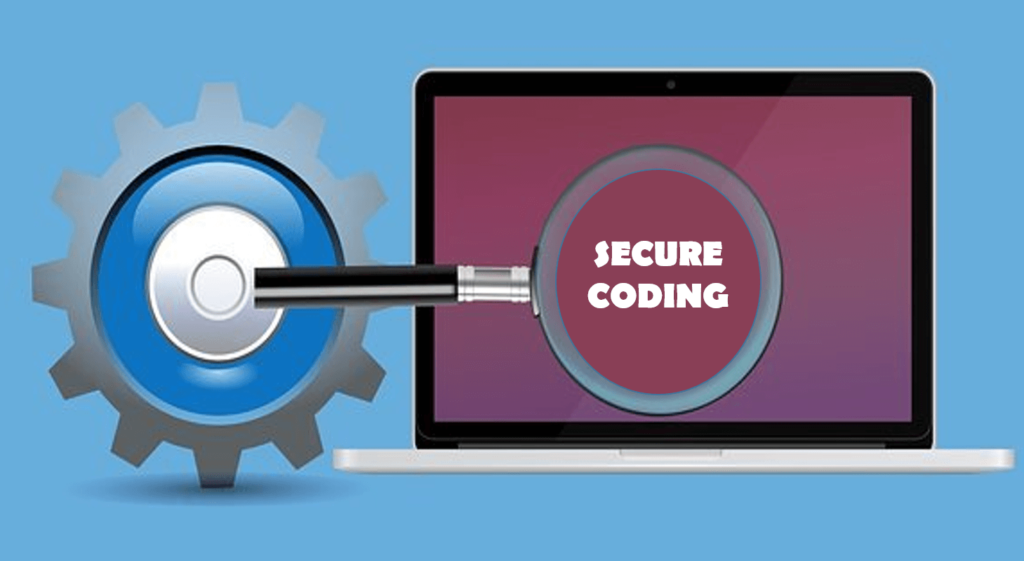
In this day and age, when smartphones are the most common form of electronic communication, mobile applications have become an indispensable component of our everyday lives, allowing for seamless communication, entertainment, and productivity. But the huge number of mobile apps has also caught the attention of cybercriminals. This means that security is now the most important thing for both makers and users. Because technology is always changing, mobile app makers need to ensure their apps have strong security from the start to keep user data safe and their apps running properly.
This piece goes over the whole topic of mobile app security and gives developers a list of best practices they should follow throughout the whole development process. By using these techniques, developers can make their apps safer from possible threats, giving users a safe and reliable experience.
Secure Code Practices:

a. Code Review:
- Conduct regular code reviews to identify and rectify vulnerabilities.
- Implement coding standards and guidelines to enhance code quality.
b. Input Validation:
- Validate user inputs to prevent injection attacks.
- Utilize parameterized queries to protect against SQL injection.
c. Encryption:
- Encrypt sensitive data during transmission and storage.
- Use strong cryptographic algorithms and keep libraries up-to-date.
Authentication and Authorization:
a. Multi-Factor Authentication (MFA):
- Implement MFA to add an extra layer of security.
- Enforce strong password policies to prevent unauthorized access.
b. Session Management:
- Use secure session management techniques.
- Implement session timeouts and re-authentication for sensitive actions.
c. OAuth and OpenID Connect:
- Leverage industry-standard protocols for secure authentication.
- Regularly audit and update OAuth tokens and access controls.
Data Protection:

a. Data Minimization:
- Collect only the necessary data to limit exposure in case of a breach.
- Dispose of unnecessary data responsibly.
b. Secure Data Transmission:
- Use HTTPS to encrypt data in transit.
- Avoid transmitting sensitive information through insecure channels.
c. Data Backups:
- Regularly backup user data and ensure the integrity of backups.
- Test data recovery procedures to minimize downtime.
Secure Network Communication:
a. API Security:
- Authenticate and authorize API requests.
- Implement rate limiting and monitor for abnormal API activity.
b. Certificate Pinning:
- Employ certificate pinning to prevent man-in-the-middle attacks.
- Regularly update and monitor SSL/TLS configurations.
Code Obfuscation and Anti-Tampering Measures:
a. Code Obfuscation:
- Obfuscate code to deter reverse engineering.
- Use tools to make it difficult for attackers to understand the application’s logic.
b. Anti-Tampering:
- Implement integrity checks to detect tampering.
- Employ code-signing to ensure the authenticity of the app.
Regular Security Audits and Penetration Testing:

a. Regular Audits:
- Conduct periodic security audits to identify vulnerabilities.
- Address and mitigate the findings promptly.
b. Penetration Testing:
- Hire ethical hackers to simulate real-world attacks.
- Test both the application and its backend infrastructure.
User Education and Privacy:
a. Privacy Policies:
- Communicate data handling practices to users.
- Regularly update and adhere to privacy policies.
b. User Permissions:
- Request the minimal permissions necessary for app functionality.
- Educate users on the importance of granting permissions judiciously.
Regular Security Updates:
a. Patch Management:
- Stay vigilant for security updates for all dependencies and third-party libraries.
- Promptly apply patches to address known vulnerabilities.
b. Automated Security Checks:
- Implement automated tools for continuous security checks.
- Use static analysis and dynamic scanning to identify and rectify potential security issues.
Incident Response Plan:

a. Develop an Incident Response Plan:
- Prepare a comprehensive incident response plan detailing steps to be taken in case of a security breach.
- Conduct regular drills to ensure the effectiveness of the plan.
b. Communication Protocols:
- Establish clear communication channels for reporting security incidents.
- Keep users and stakeholders informed in the event of a breach with transparent and timely updates.
Compliance with Regulations:
a. Stay Informed About Regulations:
- Stay abreast of evolving data protection and privacy regulations.
- Ensure compliance with regional and international standards such as GDPR, HIPAA, or CCPA.
b. Data Localization:
- Be aware of data residency requirements and ensure compliance with local laws.
- Implement mechanisms to restrict the storage and processing of data based on geographical regulations.
User Feedback and Bug Bounty Programs:

a. Encourage Responsible Disclosure:
- Create avenues for users and security researchers to report vulnerabilities responsibly.
- Establish a bug bounty program to incentivize ethical hackers to discover and report security flaws.
b. Swift Response to Reports:
- Acknowledge and investigate reported issues promptly.
- Provide credit and rewards to individuals who contribute to enhancing the app’s security.
Secure Offline Functionality:
a. Data Encryption in Offline Mode:
- Implement encryption for locally stored data to secure information in case of device loss or theft.
- Apply security measures to prevent unauthorized access to cached data.
b. Offline Authentication:
- Utilize secure offline authentication methods.
- Implement biometric or PIN-based authentication for offline access to sensitive features.
Collaboration with Security Experts:
a. Engage Security Consultants:
- Seek the expertise of professional security consultants.
- Conduct regular security reviews with external experts to gain insights into potential vulnerabilities.
b. Continuous Learning and Training:
- Foster a culture of continuous learning among development teams.
- Provide regular training sessions on emerging security threats and best practices.
Conclusion:
As the mobile app landscape continues to evolve, prioritizing security in the development process is non-negotiable. By incorporating these best practices, developers can build resilient applications that meet user expectations and safeguard sensitive information from the ever-growing threat landscape. A secure mobile app not only protects users but also contributes to the overall trustworthiness and success of the application in an increasingly competitive market.


